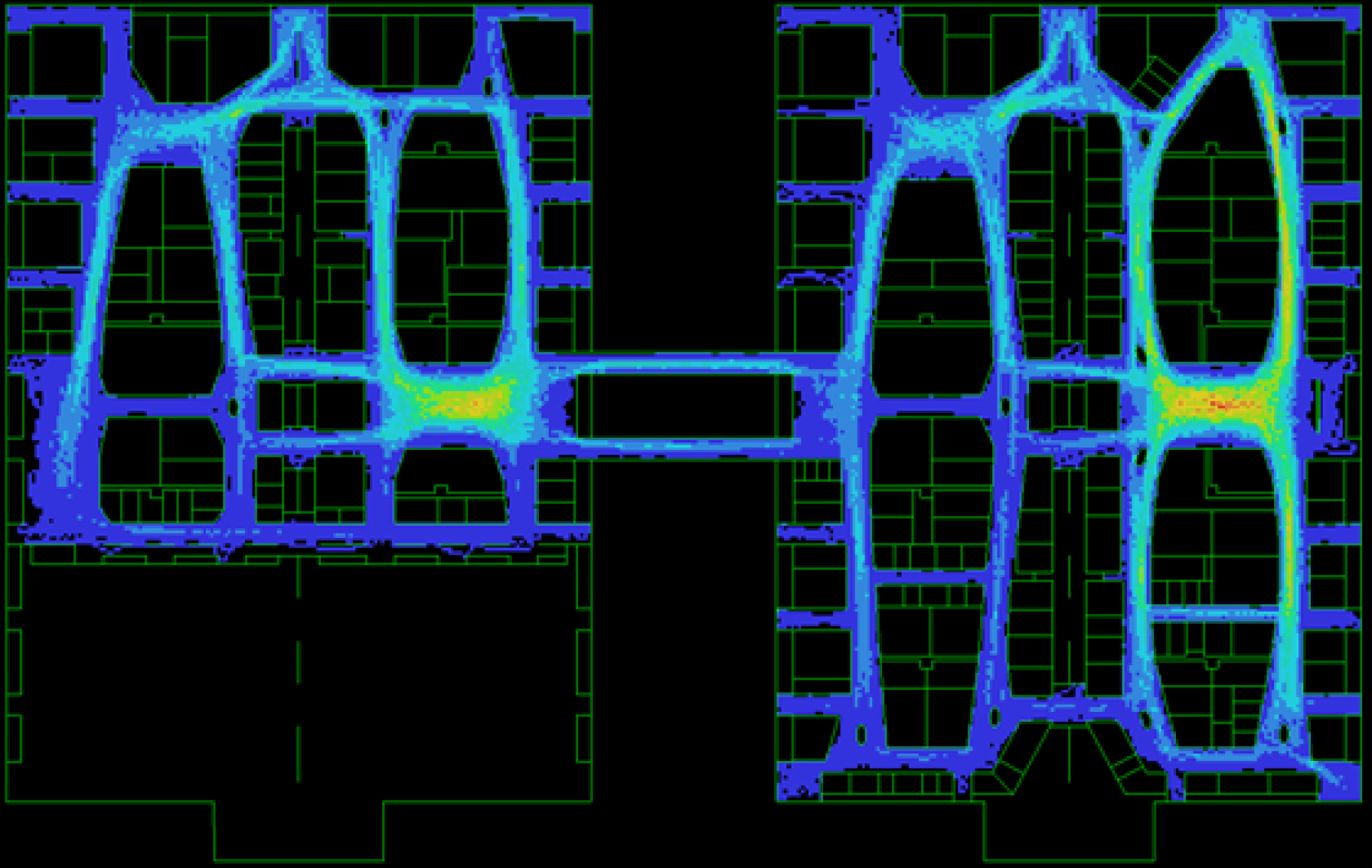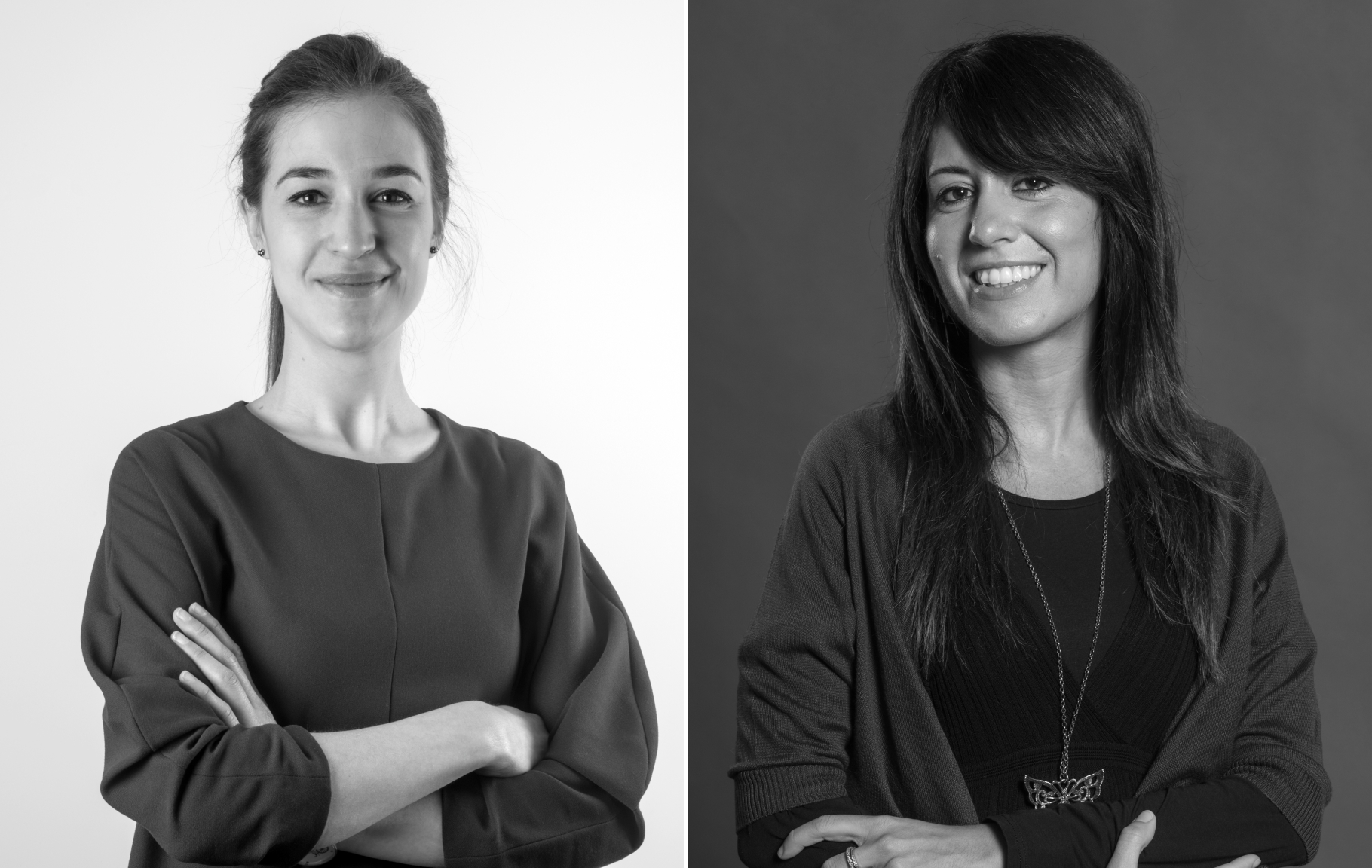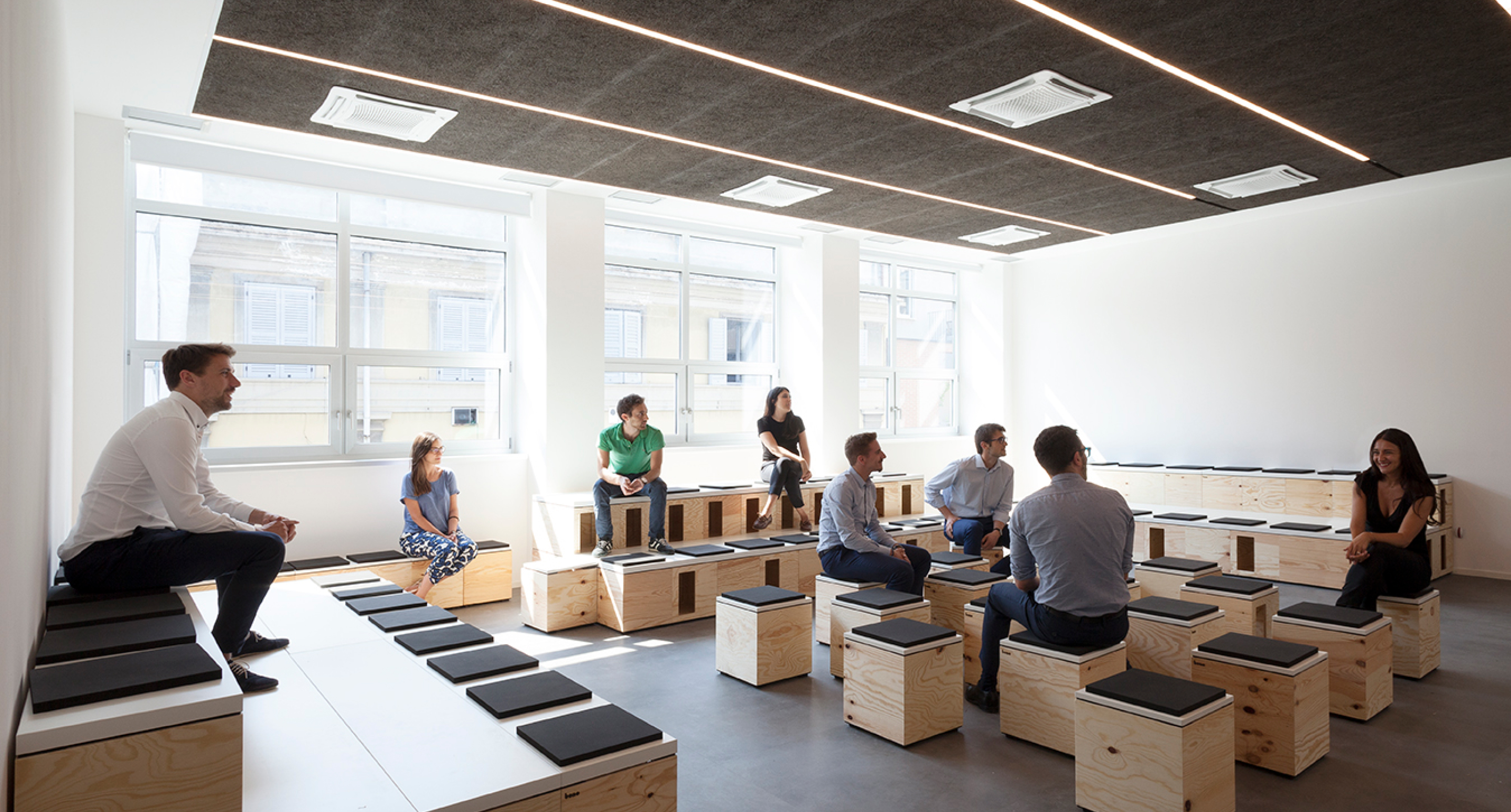
Space Syntax is a method that explains how the shape of architectural space can influence the flow of moving people inside it. Theorized in 1976 by Bill Hillier (1937–2019), Professor of Architectural and Urban Morphology at the University of London, Space Syntax sets out to explain – and thus to design – the behaviors and circulation of people in constructed contexts, from the scale of the building to that of the city. Examples in which the theory has been applied include the redesign of Trafalgar Square and the Millennium Bridge in London (both by Foster + Partners), where the construction has brought tangible benefits for the development of neighboring urban areas. Bill Hillier’s theory also has to do with our perception of the quality of spaces, as the architect Katia Gentilucci, Practice Leader in workplace design of Progetto CMR. And it is a tool that is still being applied today, as demonstrated by Viola Cambié, R&D Computational Engineer of Lombardini22, who has used it for the renewal of the exhibition layout of Euroluce 2023.


Space Syntax, in short
Space Syntax is a theory that was developed at the start of the 1970s with the aim of investigating the relationship between space and society. It has produced systems of analysis that connect the forms of space and the flows of people, in relation to social, economic and functional aspects. The theory is still applied today on an urban scale and in interior design. The basic idea is that spaces can be broken up into components, models, and analyzed as if they were “networks” of choices, represented in maps and graphics to describe the connection and interaction among those same spaces. Various morphologies can be hypothesized: axial spaces, namely on a directional axis; volumetric perspectives arranged according to precise points in the space; convex spaces, or volumes visible from all points inside them. The theory of “street networks” becomes a metaphor to quantify and describe “navigation” in any space. From airports to offices and hospitals: environments in which the theme of “wayfinding” is crucial, in terms of spatial taxonomy (hierarchy). Street networks are governed by various types of actions: such as “integration,” which measures the quantity of actions necessary to move along a street segment or to reach other segments of the network; “choice,” interpreted as a “flow” in the street network, like the movement of a body of liquid in contiguous street segments; the “linear distance” from the central point to all the other segments. These actions can be combined in computational diagrams.


The value of space syntax in design and multidisciplinary research
Although with the limitations of any general system of modeling, space syntax can become a tool of design and planning that puts the functioning of a building into relation, simultaneously and on different scales, with the city, in a single organism. Computational modeling also makes it possible to simulate design hypotheses and scenarios. Such theories on the ranking of spaces and the flows of people inside them have led to comprehension of the logic that governs buildings, while at the same time permitting association of space syntax with other scientific fields connected with constructed space, such as sociology or cognitive psychology. For example, it is possible to understand how an individual comprehends space through the acquisition, organization and utilization of information during “navigation” in a physical context. In the case of the city, space syntax can indicate how to regulate the distribution of uses of land area, such as retail or residential purposes. The relationship between the spatial grid and the movement of people is so deep as to make cities into “economies of movement.” Along these lines, architecture can even be seen as the cause of social malaise: a complex and poorly structured internal space can lead to weakening of the “virtual community,” namely of that combined presence of people that is activated precisely through their natural movement in the setting. The arrangement of pathways, the visual perspectives, the ease of interpretation of the layout and landmarks are elements of space syntax that influence the harmonious circulation of people and their cognitive perception of their environment, also with consequences on behavior. Space Syntax, in fact, makes it possible to compose and orchestrate the “narrative” of a place.


The viewpoint of designers: Viola Cambié, R&D Computational Engineer, Lombardini22
“Space Syntax is based on the premise that the shape of architectural space can influence the movement of people inside it. This tool has been applied by Lombardini22 for the recent project of renewal of the exhibition layout of Euroluce. Space Syntax has developed as a 'family of techniques' for the study of layout as a relationship between spaces and mutual visibility. It is plausible to imagine that well-organized locations will also be those that are most accessible and utilized, and that spaces with greater visual connection will also be those towards which the flow of people is ‘naturally’ directed. In a workplace this means being able to deduce patterns of movement, possibilities of meeting, flows of communication, positioning of areas of a more regenerating nature, with respect to those set aside for leisure. If it is true that most people are dissatisfied with their own working environment, design supported by data on use and the shaping of space can be capable of improving wellbeing of employees, at times taking the place of ‘decision making,’ which is often the result of standard in-house policies and intuitions.”


The viewpoint of designers: Katia Gentilucci, Practice Leader in workplace design of Progetto CMR
“The aim of theories like Space Syntax is to understand how the design of a space can suggest certain behaviors and ways of living to people. This insight of Bill Hillier, and the definition of 'space as educator' used by Loris Malaguzzi of Reggio Children, bear witness to the desire to deeply investigate the underlying logics of space. Like that of offices, which given the necessities connected with new ways of working have revealed and underlined many limitations. Inside Progetto CMR we are working more and more on the insertion of informal spaces in the creation of new facilities. In the offices for PwC in Monza we have designed an arena that makes it possible to hold meetings on wooden steps, where people can freely face each other and exchange ideas, as opposed to traditional conference rooms that call for a frontal speakers’ zone facing an audience, less conducive to participation. We are concentrating on informal spaces that can encourage activities of brainstorming, such as those of e-Novia in Milan, with modular furnishings that can be reconfigured by users in different ways. As designers, we believe that today, more than ever before, spaces can be a true driver of change.”




